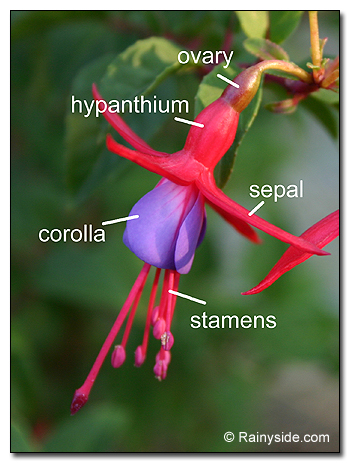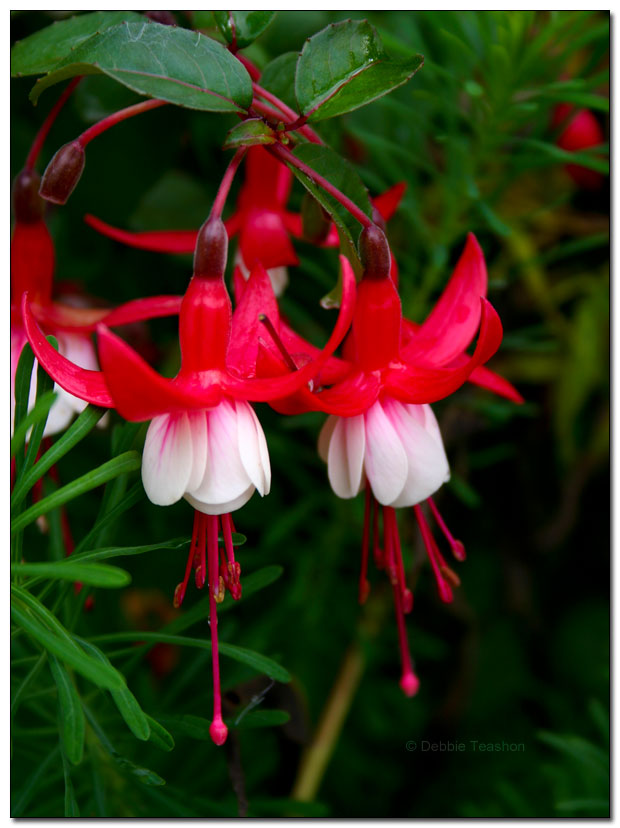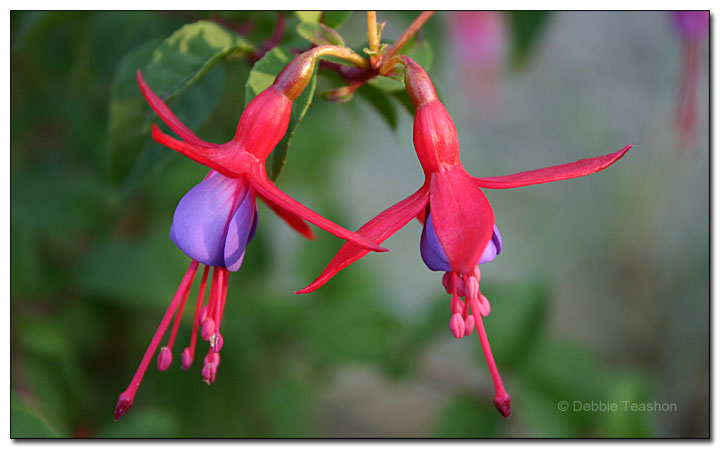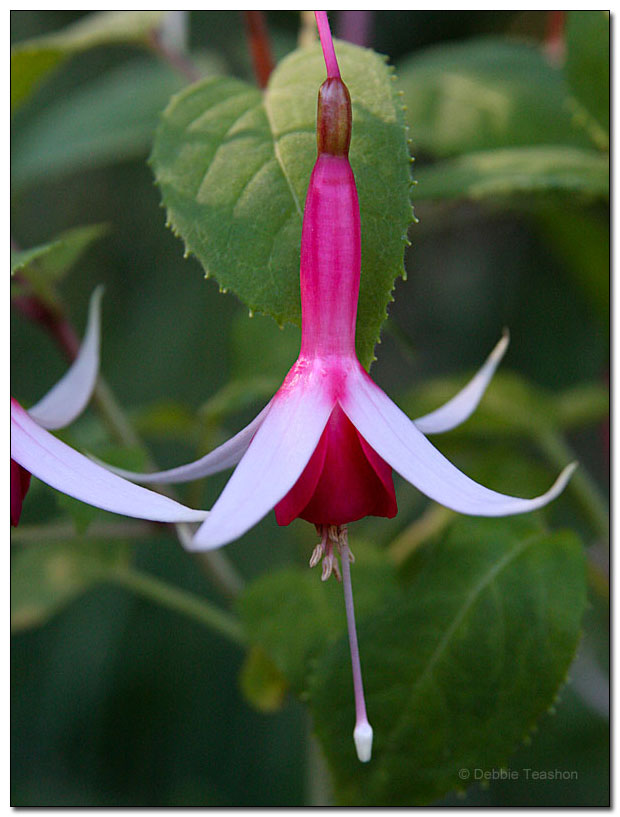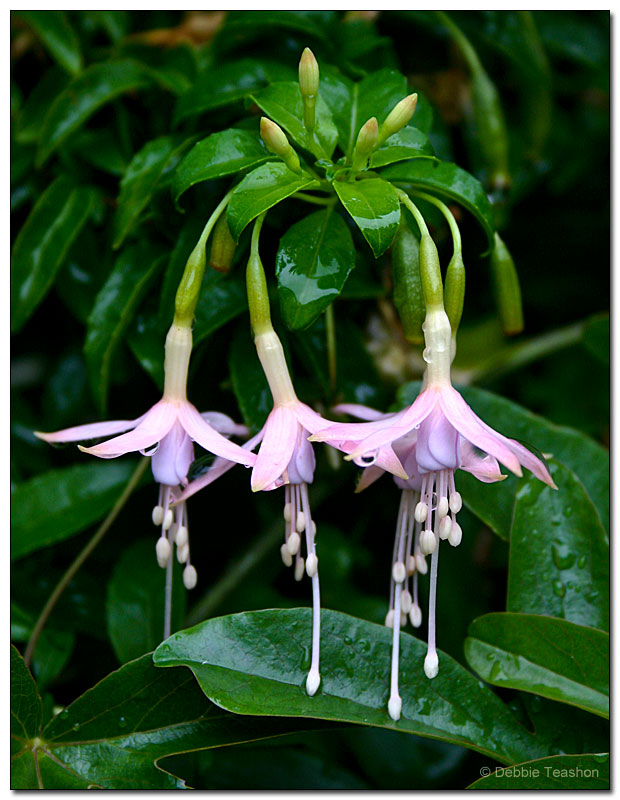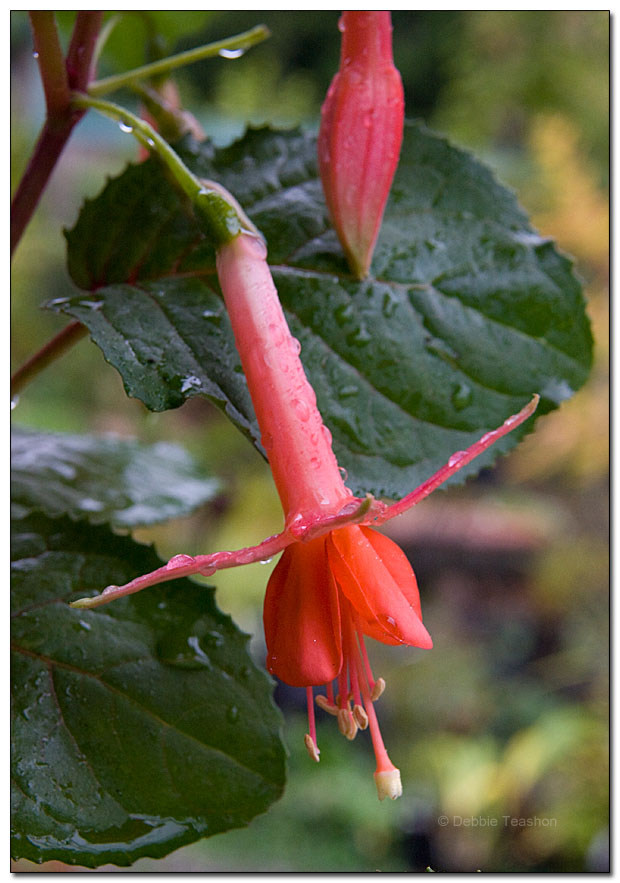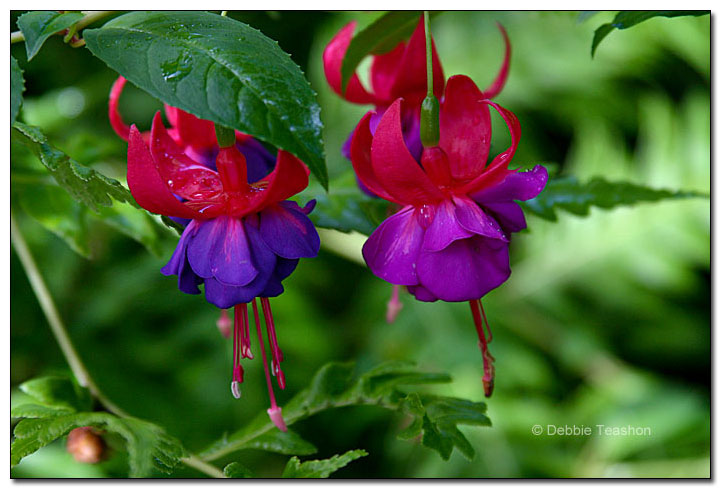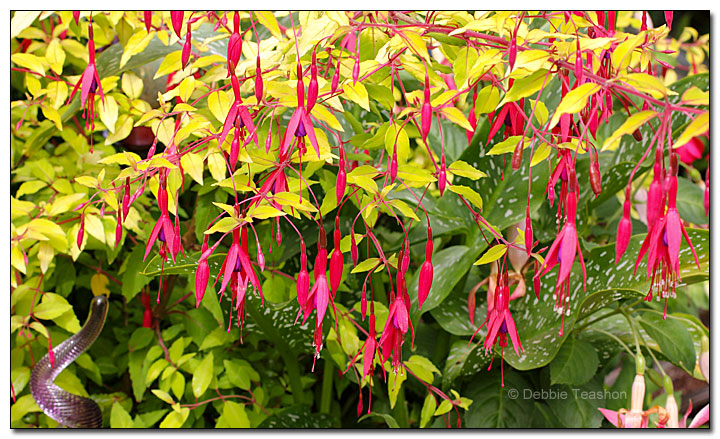The Hardy Fuchsias
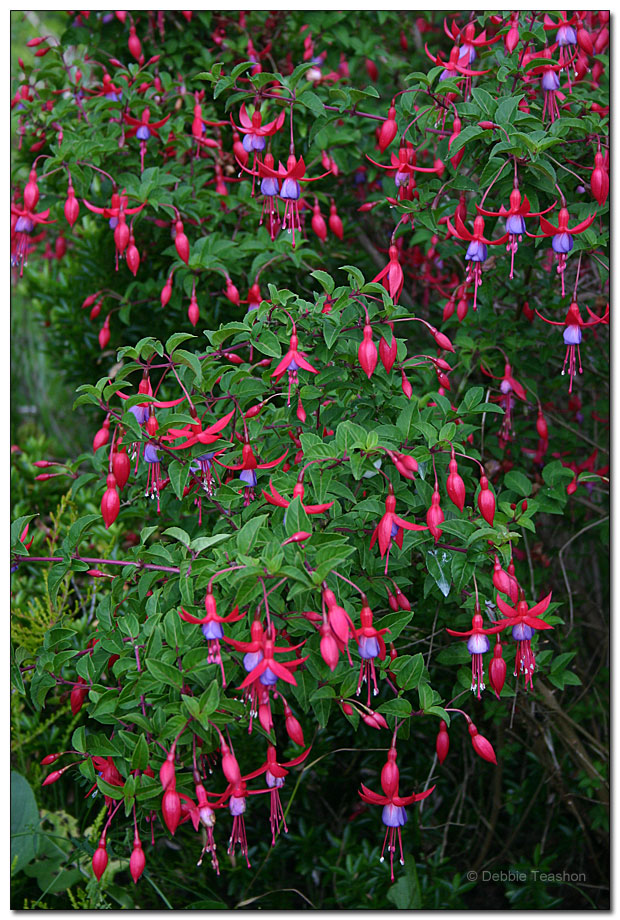
It is said that people who love fuchsias absolutely love them. With three generations of fuchsia lovers in my family, it became my destiny to fall in love with them.
I remember my grandmother’s hanging baskets overflowing with fuchsia branches smothered in blousy, red and white flowers. My family sat on a deck and chatted with Grandma while she tended her beautiful baskets. Her nimble fingers quickly pinched off the faded blossoms. I sat there, mesmerized by the hummingbirds buzzing in to drink the nectar from the flowering baskets above me.
When I purchased my first fuchsia basket, I chose the blousy red and white flowers of Fuchsia ‘Swingtime,’ similar to the ones my grandmother grew. Years later, I spotted a six-foot-tall, hardy fuchsia growing in a lightly shaded woodland garden. I began a lifelong love affair with the genus.
It’s not surprising that fuchsias thrive in our cool maritime climate. Many fuchsias come from the cloud-infested, higher elevations in the Southern hemisphere forests. Hardy fuchsias easily fit into almost any landscape, from woodland gardens to formal ones. You can utilize them as seasonal hedges, cascading down walls, housed in containers or nestled into a mixed border. Wherever you plant them, they will bring a long season of color for the hotter summer and cooler days of fall.
During mild winters, hardy fuchsias lose their leaves with minimal stem die back. However, about every four to five years, this area experiences a colder than average winter that freezes the hardy fuchsias to the ground. Colder winters aren’t a problem for long-entrenched plants. They sprout from the roots and by midsummer flower as profusely as before. Low-maintenance plants, once established, fuchsias are surprisingly drought-tolerant in mild climates. However, they prefer moist, humus-rich, well-drained soil for optimum growth and flowers. The following are a few select fuchsias.
Planting and Growing Tips
Choose a well-drained spot in your garden in the spring or early summer. Dig the hole twice as wide as the root ball, and then mix in a handful of organic fertilizer. Dig the hole deep enough for a small plant so that half the plant goes under the soil. For larger plants, place the crown 6 inches deeper.
Back-fill the hole halfway with soil and water it in. After back-filling the rest of the hole and watering again, mulch the fuchsia lightly with compost or composted manure. When fall arrives, spread an additional six-inches of mulch over the plant. When new leaves begin to open in spring, prune back about half of the previous year’s growth.
If the plant dies back to the ground in winter, prune the dead stems. Fertilize your fuchsias once in spring and again in early summer, and add a yearly mulch of compost or manure.
Fuchsias of Merit
Fuchsia ‘Santa Claus’
A grouping of these heat-tolerant, 3-foot-tall plants offers a visual treat whenever they bloom. Like Christmas ornaments, the red-reflexed sepals open to reveal pure-white corollas streaked with red veining, while rose-pink stamens dangle below. The bright colors of summer come to life when paired with a deep blue, lace-capped hydrangea, which flowers simultaneously.
Size: 3 feet tall and 3 feet wide
Fuchsia ‘California’
I am smitten by the orange and coral fuchsias, such as this recent addition to my garden. The soft green leaves set off the flowers with long, rose-pink tubes; white-tipped, pink sepals; and rose-coral corollas. These plants can reach up to 9 feet tall in a California garden, but around the Puget Sound region, they grow only a few feet above the ground.
Size: 2 feet tall and 3 feet wide
Fuchsia ‘Ravenslaw’
This 1986 introduction is an upright bush that grows up to 4 feet tall. “Ravenslaw” lights up a woodland garden with red flowers dangling below luscious, deep-green leaves. The red sepals open to reveal a reddish-purple corolla that fades to match the sepal hue as the flower ages, giving it a striking red-on-red effect.
Size: 4 feet tall and 3 feet wide
Fuchsia ‘Tom West’
I selected this variegated fuchsia many years ago for its delicious foliage splashed with cream, green and rose hues. Rosy-red stems carry leaves accented by red veins, which match the sepals topping the purple corolla. The horizontal-growing branches soften a rock wall, but the plant looks equally handsome on flat ground. Growing in a hanging basket, the attractive foliage holds up during summer heat.
Size: 2 feet tall and 3 to 4 feet wide
Fuchsia ‘Pat’s Dream’
This fuchsia is a prolific bloomer, covering itself with hundreds of flowers from June until the first frost. Reflexed, red sepals and blue-purple corollas with red veining and red stamens are a remarkable combination. The corollas fade to violet when the flower matures.
Size: 3 to 4 feet tall and 3 feet wide
Fuchsia ‘Checkerboard’
Wider than its height, “Checkerboard” is an upright, free-flowering fuchsia. Its charming, pendulous flowers have alternating colors — red corollas, white sepals and thin, red tubes (hypanthiums). This fuchsia is a good choice for growing as a standard in containers, hanging baskets, or in the garden.
Size: 2 feet tall and 3 feet wide
Fuchsia magellanica var. molinae
Unlike most magellanicas, with bright red and purple flowers, this species’ corollas are soft lavender, with almost white sepals, with a blush of pink. Sources say Fuchsia magellanica var. molinae attains a height of 5 or 6 feet when mature. However, this Fuchsia grew 8 feet tall and almost as wide in my garden after seven years.
Size: 5-8 feet tall and 5-10 feet wide
Fuchsia ‘Claire de Lune’
Bred in France circa 1880, ‘Claire de Lune’ has the most scrumptious orange hues with tinges of salmon in its single blossoms. This is a graceful, trailing fuchsia that is equally at home with its bronze-green leaves cascading down a wall or a container. I fell in love with the name ‘Clair de Lune’ because it sounded so romantic. And no wonder — the name is French for moonlight.
Size: 30 inches tall and 30 inches wide
Fuchsia ‘Army Nurse’
Introduced just after World War II, this American beauty adorns itself in richly-hued blossoms. The ample double flowers have a short tube, reflexed carmine red sepals, rose-streaked purple corollas that fade to violet as it ages and rose-pink stamens. “Army Nurse” is a real trooper, growing equally well in full sun or dappled shade.
Size: 2 to 3 feet tall and 2 feet wide
Fuchsia magellanica var. gracilis ‘Aurea’
‘Aurea’ is a choice cultivar for its red-veined, golden foliage suspended from red stems; the golden foliage is reason enough to grow it. Growing over a wall, the upright fuchsia’s arching habit cascades its golden skirts over dark rocks with stunning results. The 2-inch, single, nodding flowers have red tubes (hypanthiums) and sepals with purple corollas contrasting pleasantly against the bright foliage. Provide afternoon shade to keep the foliage golden to keep the leaves from scorching.
Size: 3 feet tall and 4 feet wide
Fuchsia Waltz from Debbie Teashon on Vimeo.
Original article for West Sound Magazine
Fall Issue 2014.

